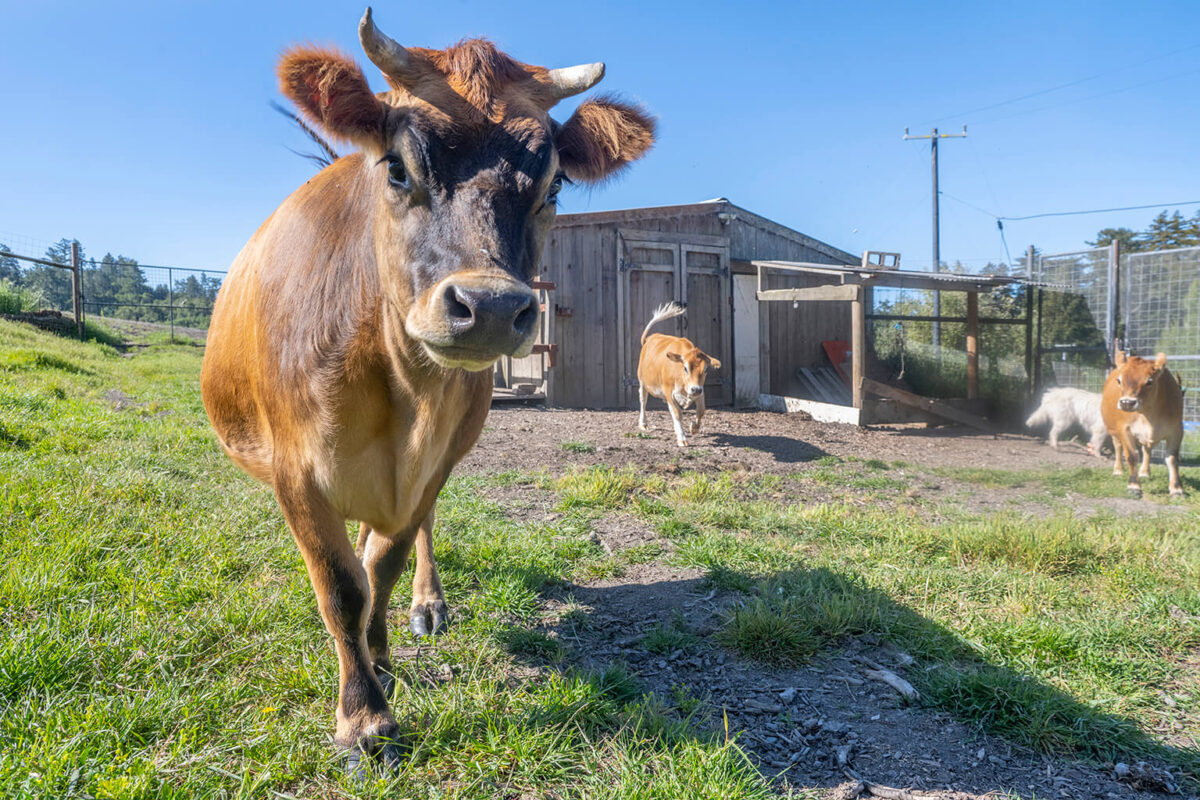Words by Andrea Gemmet
After I turn off of Highway 84 and follow the curving route to Twisted Fields, a research farm in San Gregorio, I feel like I’ve traveled back in time to California’s rural past. My car surprises little quails that grudgingly scurry out of the narrow road and into the underbrush. The feeling intensifies when I turn into a driveway lined with a riotous profusion of bright orange flowers and find an old farmhouse at its end.
The picturesque property sprawls across 127 acres of steep hillsides in an abstract patchwork of fields, some prepared for planting, others hosting a verdant tangle of soil-replenishing cover crops. Flocks of heritage-breed chickens forage for insects while a herd of goats munches weeds. A couple of petite cows and an enormous pig loll around next to a barn.
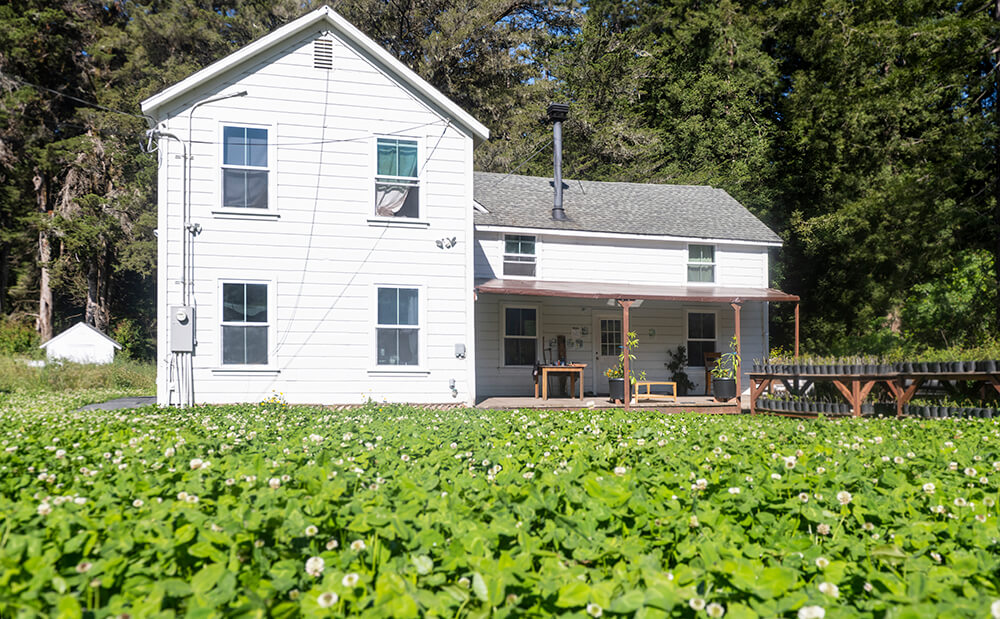
Cover Photo and Above Photo: Paulette Phlipot
The one glaring incongruity in this 20th-century agricultural daydream is a 21st-century contraption that looks as if a Mars Rover had been built with a giant Erector Set. The Precision Farming Rover, a sturdy, solar-powered autonomous vehicle, is a defining feature of Twisted Fields—a place that marries time-honored sustainable farming practices with tech-driven tools.
Though he was a standout student at MIT and a tech entrepreneur focused on robotics, AI and the Internet of Things, you don’t have to tell Twisted Fields owner Daniel Theobald to go outside and touch grass. A passionate fan of regenerative farming, his love of growing things started while exploring his grandmother’s bountiful garden in Los Altos as a child. It carried through to his days living in Cambridge, Massachusetts, where Daniel kept bees and raised chickens in what he describes as a tiny “postage-stamp” of a yard.
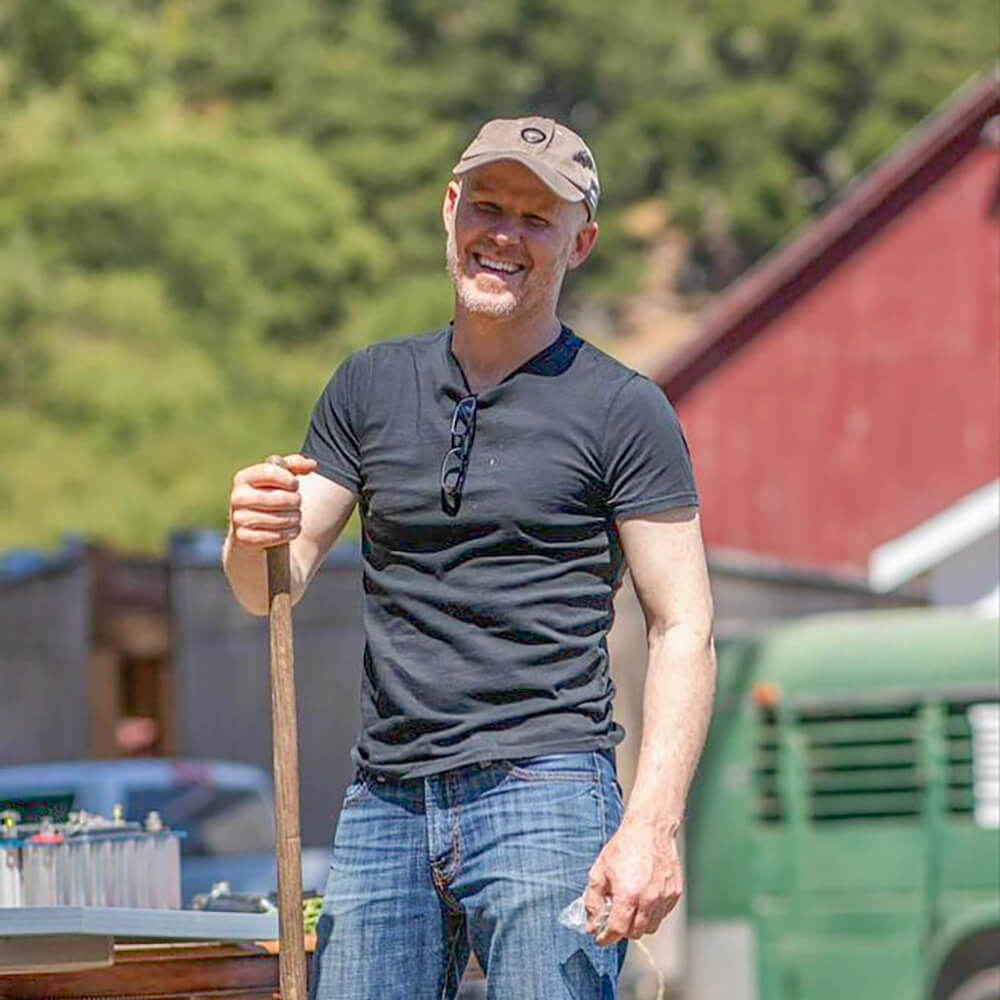
Photography Courtesy of: Twisted Fields
Though he grew up in San Jose, Daniel’s career kept him based on the East Coast for years—but he never stopped looking for opportunities to return to California. On a trip to the Golden State, he came across this beautiful piece of farmland bisected by tree-lined seasonal creeks. Sure, the soil was trampled and depleted from over-grazing, and the fields were littered with all kinds of old junk—including a mattress and a mysterious pile of garage doors—but he could see its potential. “It’s just magical. I knew that if I didn’t buy it, I’d always regret it,” he recalls.
Daniel has spent the past nine years using his Coastside farm, complete with a farmhouse dating back to the original Rancho San Gregorio land grant, to test his theories and to experience first-hand the challenges facing small-scale farms that shun industrial farming techniques. The problem, he says, is that while small-scale farms are great for their communities, the health of the planet and the quality of the food they produce, it’s really hard to make them work on a scale that can feed the world’s population. The solution, as Daniel sees it: “Either everyone goes to live on a farm again, or you use technology.” So while Twisted Fields sells vegetables and rainbow-hued eggs at farmers markets, it’s also a testing ground for innovative farm tech.
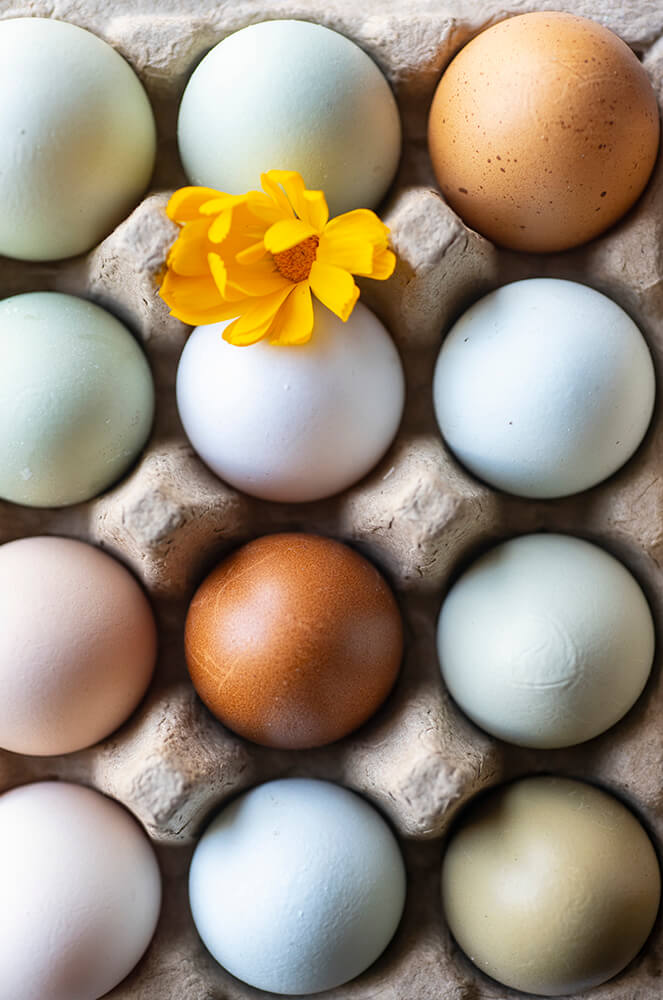
Photo: Paulette Phlipot
Daniel sees some big flaws in a lot of agriculture technology—it’s too expensive or it’s designed as a solution to problems that farmers don’t actually have. “Farmers don’t want something engineer-executed by someone who’s never farmed before,” he says. “I bought the farm to understand what the real problems are and explore solutions—to create an opportunity for small, local farmers that’s scalable and sustainable.”
That meant coming up with equipment that’s affordable and easily adapted to different uses. His partner in that pursuit is Katie Bradford, the CEO of Rotate8, the company she co-founded with Daniel to develop a solar-powered farm automation suite. On my visit, Katie pointed out key features on the farming rover, from the optional seat under a canopy of solar panels—since it’s autonomous, it doesn’t need a driver—to the variety of tools that can be attached to the sturdy frame. It’s like a walk-behind tractor, only you can ride it or send it out solo to do defined tasks, she says. Batteries are optional, since they are costly.
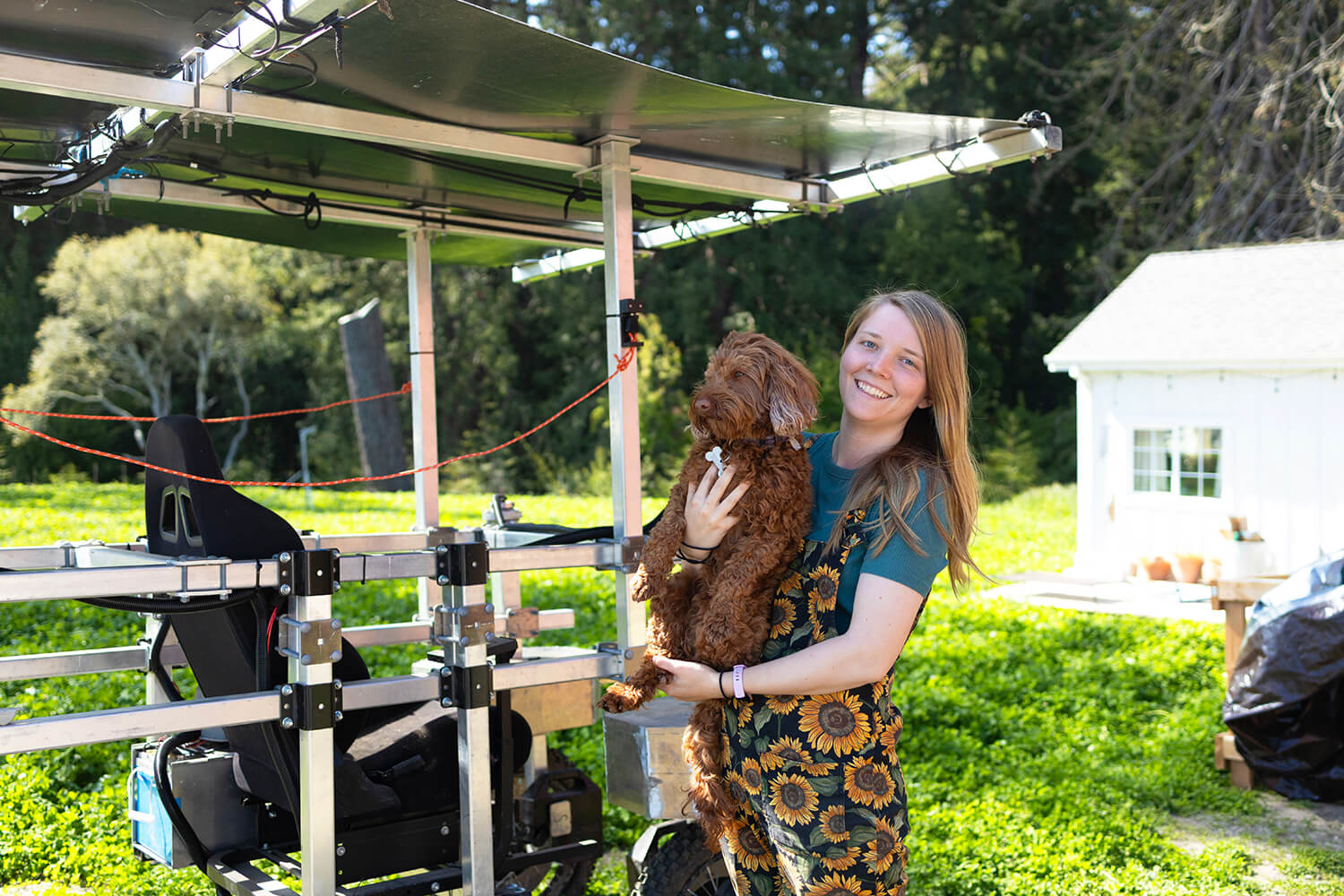
Photography Courtesy of: Twisted Fields
“A lot of tech companies are making equipment to do one thing, like weed strawberries or pick tomatoes,” Katie says. “It’s geared toward monoculture.” Their utilitarian rover, on the other hand, is designed to be endlessly adaptable and runs on open-source software. You can raise it for taller crops, widen it to fit your farm’s furrows and attach all kinds of equipment to its base.
Katie says they’ve put a lot of work into making sure the rover can keep rolling in all kinds of conditions, like muddy fields, steep slopes and loose gravel. The solutions they’ve come up with include installing wider tires, adjusting the weight so it’s lower on the platform and using intelligent algorithms for slip detection. “Our rover can go where tractors can’t. Our large tractors get stuck in the mud in the rainy season, but the much-lighter rover is able to navigate a variety of terrain,” Katie says.
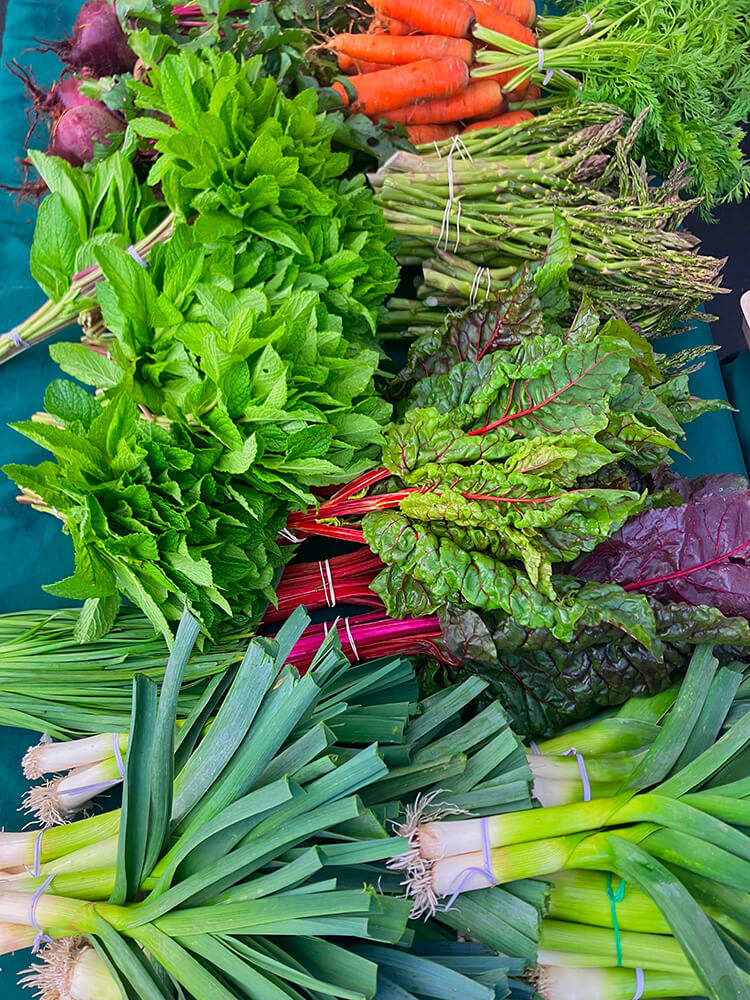
Photo Courtesy of: Twisted Fields
And while the farm rover’s design may be devoid of flashy flourishes, it is resilient. A car hit it the day before I arrived and the rover was perfectly fine—it was the car that got damaged, Katie and Daniel recount, laughing. The impact set off a sensor and no one could get the car to stop beeping.
The car illustrates one of the big complaints about modern technology in general and farm tech in particular: it’s no longer possible for farmers to fix things themselves. They have to send them off to an authorized dealer and wait for repairs. Daniel knows this from personal experience. “If my tractor breaks, I’m out of business. You can be waiting for parts from Germany for six months—which is what happened to me last time,” he says.
That won’t be the case with their farm rover. “If we go out of business, you’ll be fine. You own it, you can fix it.” He and Katie are aiming to start selling rover kits later this year.
In the meantime, Twisted Fields has been focused on restoring the land while raising chickens and poultry. Daniel says they grow their own chicken feed, mostly in the form of pumpkins, sunflowers and corn. “The vegetable garden, anything we don’t sell or eat ourselves, goes to the chickens,” he says. “Our chickens probably eat better than most of the people on the planet.”
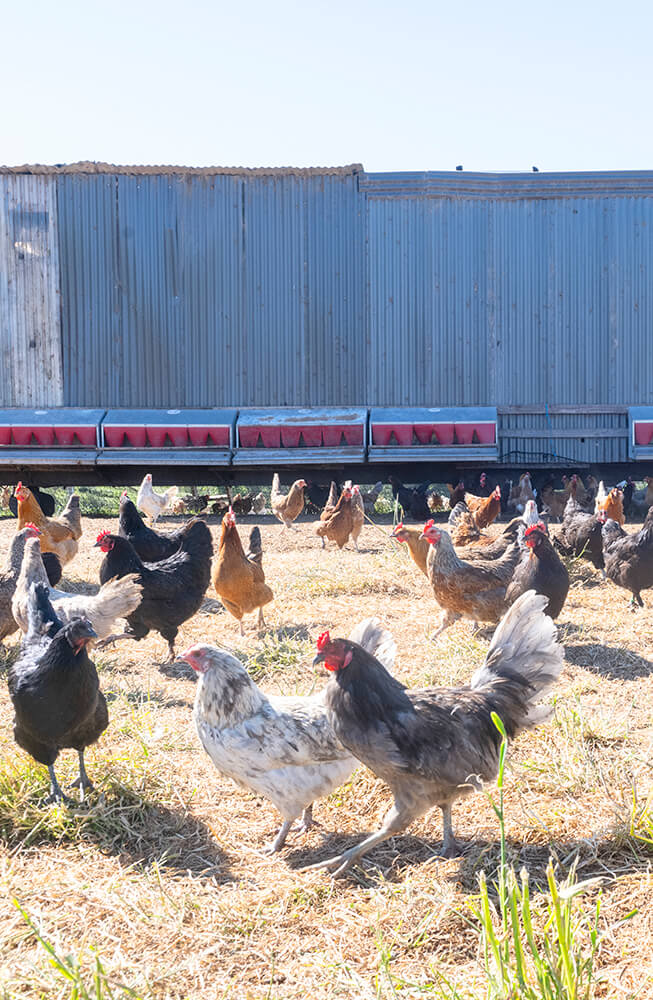
Photo: Paulette Phlipot
Besides a gaggle of ducks, Twisted Fields has four flocks of chickens, made up of a variety of heritage breeds and housed in mobile coops. The doors open automatically at sunrise and close at night. A row of nesting boxes are set into the sides behind red flaps. When we go to inspect one of the coops, the disgruntled birds stop pecking and scratching and hightail it out of our way. A few hens are too busy to leave the nesting box and cluck at us disapprovingly when we lift a metal flap to admire the collection of freshly laid eggs. Outside of the fenced-off field, watchful white Akbash dogs help safeguard the flock from hungry predators like mountain lions, coyotes, bobcats and skunks.
“We focus on having as wide and diverse a population of chickens as possible,” Daniel says. While heritage birds may not produce as many eggs as their conventional counterparts, Twisted Fields customers love the colorful results. “Genetic diversity is really important in everything we do here,” Daniel says, gesturing toward trestle tables covered with plastic pots growing elderberry, yarrow and loquats. “We propagate plants from seeds and incubate our own chickens.” Even the redwood saplings he’s been planting to restore the creekbanks are grown from seeds.
Twisted Fields is an unlikely farm with an unlikely business model: eschewing more efficient industrialized agriculture for time-honored sustainable practices. Rotate8 is developing low-cost tools for farmers—people who rarely have much money to spend on anything, let alone experimental equipment. And its open-source platform means customers will be able to adapt it themselves.
“A customer said to us, ‘If you make it so simple, people are going to hack it,’” says Katie. “But that’s the whole idea.”
Or, as Daniel puts it: “We think we will do well by doing good.”


